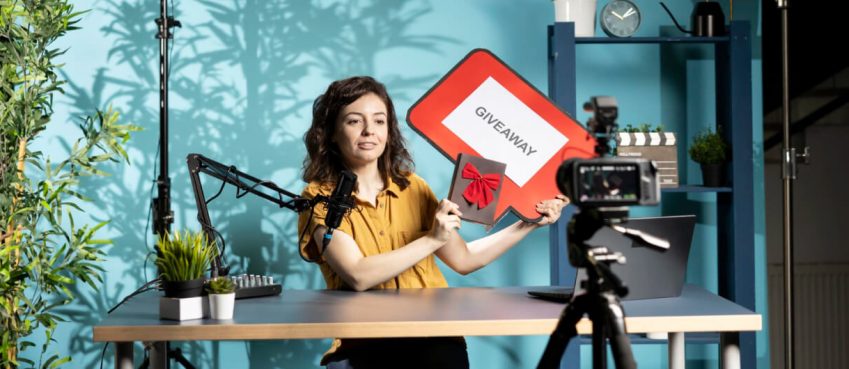
In recent times, traditional ways of marketing have become an antiquated form of promoting brands. Rather, going digital is the rising need of the brands these days.
In today’s digital scenario, people want to get a picture of how the product will fit their lifestyle. This anticipation of the product’s usability is turned into reality by shoppable images.
This new trend of shoppable images has stimulated the desires of today’s social media enthusiasts and have accelerated their path to purchase.
Users are actively looking for the products and brands that butter up their lifestyle, and what’s better than social media platforms to get their needs fulfilled.
So, here in this blog, we have come up with the new emerging feature of social media, i.e “Shoppable images”.
What are shoppable images?
With the drifting concept of visual advertising of products, shoppable images have emerged as the immersive content to drive more sales.
In a simple definition, shoppable images are the new shopping trends beyond “link in bio” action. It infuses the essence of shoppability into the images by adding tags to it.
These tags include product descriptions, price, specifications, and checkout options that provide the customers with a smooth purchase path.
Shoppable images are compatible with various platforms such as Instagram, Google, Pinterest. There are many visual commerce tools that help you add the feature of shoppability to your content.
Benefits of shoppable images
1. Turns User-generated content into visual merchandise
Leveraging user’s content to gain new potential customers has turned out to be fruitful for brands. Brands mix their own content with UGC to draw in more customers. This is because people trust customers’ recommendations rather than the brand’s advertisement.
By adding the shoppable tag to the user-generated content, brands can showcase the real and original image of the product along with its description, and can gain user’s trust and reliability. This helps the brands to boost engagement and enhance sales.
Also read: Top 10 Business Intelligence Tools of 2021
2. Provides convenient shopping journey
It renders the customers with the opportunity to shop conveniently and comfortably, and to explore and purchase the products as they socialize.
Instead of leaving the page, customers can directly buy from the social media platform as it decreases the purchase barriers compared to stand-alone e-commerce websites.
This streamlined approach has reduced the time it takes between realizing the need for the product and fulfilling the need by purchasing the product.
With the least distraction time, customers are more attracted to the product and are likely to go ahead with the purchase decision. Thus, it improves the conversion rates of the brand and promotes growth.
3. Converts your platform into online shopping mall
By adding tags to the products, brands can create their own store online without even having an offline physical store.
While shopping malls were once the place to hang out for purchase decisions, social media platforms are the new age grounds to hover over for a product. Like the mannequins used in window displays of the retail stores, brands use UGC turned into shoppable images to display their products.
Brands are now using a social commerce platform to turn their social content into shoppable content images to drive sales. This has turned out to be a cost-effective way for the brands to showcase their products and also increase sales.
This has turned out to be a cost-effective way for the brands to showcase their products and also increase sales.
4. Allows brands to pour in more data
A lot of digital marketing decisions rely on customer’s data, or it would be better to say that they are data-driven. The more the data, the better will be the marketing resolutions.
By creating shoppable images, brands can know which products are liked the most by the customers using click through rates. This will help the brands to post more of the similar products to get better sales.
Also, brands can get to know about the geographical locations having maximum purchasing power. This way brands can increase their advertising and marketing in that particular zone.
This gathered information helps the brands to improve their market performance and thus enhance their growth.
Also read: 5 Best Tiktok To MP4 Download (100% Working), No Signup
5. Enable Powerful & Rigorous User Engagement
We discussed conversions and trust but one more important part of marketing strategy is to build user engagement. This is where these images could be a perfect solution for your brand.
With almost half of the world’s population using social media and a highly image-obsessed audience, people nowadays tend to buy products online
Social media marketing has been fruitful for years but now it is time to turn it into a social commerce strategy where users spend longer time on exploring the branded products, get inspiration, and even turn the engagement into sales.
Examples Of Brands Using Shoppable Images
1. TopShop
TopShop is the multinational fashion brand showcasing women’s clothing, accessories, shoes, etc. The website’s gallery displays user-generated content i.e. the images of genuine users wearing the brand’s clothes. Once the image is clicked, visitors are forwarded to ‘shop the look’ page.
2. Saturday
Saturday, Kate Spade’s former sister, is the NewYork based clothing and lifestyle brand. Saturday gives us an example of social eCommerce where it allows the visitors to shop directly from the images from their social media by selecting the tagged products, sizes of each item and adding it to their shopping bag.
3. Jack Wills
Jack Wills is the clothing brand that gives the option of ‘shop the look’ to the visitors as they scroll through the products. by clicking this option, visitors are redirected to the page where they can choose the size and color of the product and even add it to their bag.
Also read: 50+ Trending Alternatives To Quadpay | A List of Apps Similar To Quadpay - No Credit Check/Bills and Payment
Conclusion
In this fast forward world, consumers are looking for an easy way to get their needs fulfilled. With higher online exposure, brands have a good chance of improving sales by creating shoppable posts.
It has turned out to be a profitable source of revenue generation in this fast-paced world and will compliment your growth in the e-commerce market.
You have explored what these images are, how they benefit your brand & the marketing strategy along with examples of brands using this trend. Now it is time for you to turn your brand or user-generated images into Shoppable content.
Top 10 News
-
01
[10 BEST] AI Influencer Generator Apps Trending Right Now
Monday March 17, 2025
-
02
The 10 Best Companies Providing Electric Fencing For Busines...
Tuesday March 11, 2025
-
03
Top 10 Social Security Fairness Act Benefits In 2025
Wednesday March 5, 2025
-
04
Top 10 AI Infrastructure Companies In The World
Tuesday February 11, 2025
-
05
What Are Top 10 Blood Thinners To Minimize Heart Disease?
Wednesday January 22, 2025
-
06
10 Top-Rated AI Hugging Video Generator (Turn Images Into Ki...
Monday December 23, 2024
-
07
10 Top-Rated Face Swap AI Tools (Swap Photo & Video Ins...
Friday December 20, 2024
-
08
10 Exciting iPhone 16 Features You Can Try Right Now
Tuesday November 19, 2024
-
09
10 Best Anatomy Apps For Physiologist Beginners
Tuesday November 12, 2024
-
10
Top 10 Websites And Apps Like Thumbtack
Tuesday November 5, 2024







